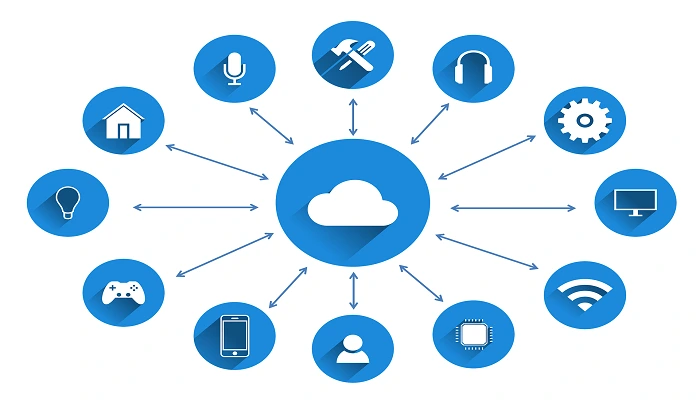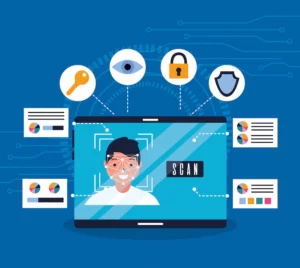Customer experience was traditionally on the periphery when it came to improving brand standing and boosting sales, which lead to trends to improve customer experience. In current times, however, statistics show that CX has never been more important. The numbers show that 68% of consumers are willing to pay more for goods and services at a brand known for its good customer service. Good customer service also keeps would-be one-time clients returning 86% of the time.
According to research, 87% of industry leaders named customer experience the most effective growth driver. In a market where technology is revolutionizing customer experience, it is up to brands to stay ahead of the curve and come up with new ways to improve customer experience. In the race toward the best ultra-personalized customer experience, businesses must take heed of technological features. Here are five top technology trends taking customer experience to new levels.
1. Omnichannel Integration
Customers today require multiple touch points to stay in contact with businesses. While businesses may have caught on to the trend and moved online, this is not nearly enough. Your business should engage with customers from different fronts. Additionally, the client expects unbroken contact through the various channels available. Seamless operation between channels is what you need to for an ultimate omnichannel customer experience.
Integrating omnichannel is easy with your teams online. First, you must identify what channels customers use to engage with your brand. According to research by Microsoft, most customers these days have 3-5 channels to reach customer care for various issues. Some of the main possibilities for omnichannel integration are:
- Mobile/SMS
- Phone
- Live chat/ Chatbots
- Website Self-service Options
- Social Media Platforms
- Internet of Things/ Voice Assistants
- In-app Features
- Reviews
Customers often prefer one contact channel to another. This is often their go-to whenever they need an issue resolved by the company. As a business, you have to ensure that each channel has a team covering it. Research shows that customers have a higher regard for companies that engage via social media.

Image by Gerd Altmann from Pixabay
2. Migration to The Cloud
In the online world, customers expect immediate, continuous, and unlimited access to information. The rise of cloud computing began in the mid-2000s. Businesses across the board embraced it for the traditional computer-related issues it solved. Almost 20 years on, cloud computing is heralded as one of the core components of better customer experience.
There is a wide range of cloud transformation solutions businesses can turn to when it comes to cloud integration. Businesses need a reliable and trusted cloud hosting provider to migrate to the cloud. Finding the best is all about finding a company that offers speed. You can streamline your cloud migration with the right automation tools and resources.

Image by Tumisu from Pixabay
3. Natural Language Processing (NLP)
The recently unveiled AI-powered NLP has quickly transformed customer-to-organization communication like SMS and live chat. Combining NLP with AI can provide real-time analytical techniques. Through AI incorporation, voice assistance has emerged as a viable channel to supplement written communication.
NLP enables a better user interface with a ‘say what you want’ approach. When connected to the organization’s information system, automated chat bots can deal with customer inquiries. With NLP, records are opened and completed automatically. Customer service personnel handle such inquiries with much of the background work completed.
4. Video Technology
In 2021 we experienced Lock Downs on a global scale that saw the use of on-demand video skyrocket. Interactions would come down to zoom calls which even senior citizens have learned to maneuver. With 67% of seniors using the internet, businesses are looking at this as the mainstay for customer engagement.
Video technology provides even better customer engagement for brands of all kinds. Video and photo sharing has become one way of identifying and verifying queries. In the coming months, automatic photo scanning using image recognition will enhance first-contact resolution minimizing the number of interactions between clients and customer service agents.

Image by mohamed Hassan from Pixabay
5. Augmented Reality
Brands are quickly adding augmented reality into the way they interact with customers. People make connections to brands through sound, sight, and motion. AR is a technology that provides an immersive experience for the customer.
Amazon is one company with AR as part of its customer experience. This is owing to the recently launched virtual try-on where you can try shoes before purchasing. All customers need to do is click the button and aim their smartphone camera at their feet. The feature is only just being adopted. AR has opened up new possibilities for companies with global reach. Customers can get a better impression of the product before purchasing, which is a great way to drive sales.

Image by Gerd Altmann from Pixabay
Conclusion
With the ever-changing nature of technology, we are bound to see more applications of digital aids across different platforms. The development of AI, video marketing, predictive analytics, and constant communication are some emerging trends businesses must grapple with. These new and emerging techniques present fresh opportunities for companies to improve customer relationships, thus building brand loyalty. Businesses stand to benefit from emerging technologies in customer care but only if they can integrate them quick enough.







